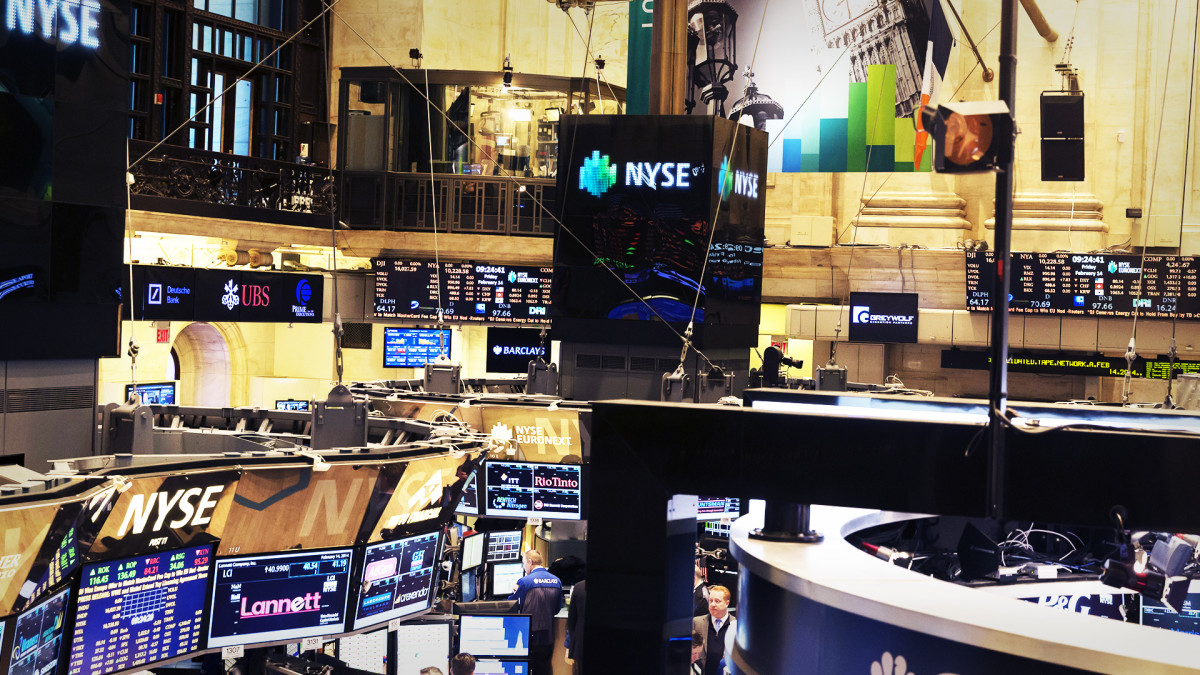
U.S. stocks turned higher Monday, heading into the busiest earnings week of the year on Wall Street, amid a pullback in Treasury bond yields that followed the first breach of 5% for 10-year notes since 2007.
Investors, however, continue to track developments in Israel's war with Hamas, which launched its deadly attack from Gaza three weeks ago, as leaders around the region, and the wider world, work to contain the fighting and broker at least a form of cease-fire.
Humanitarian aid is also making its way into Gaza, through the territory's border with Egypt, as officials continue to work for the release of more than 200 Israelis taken hostage by Hamas during the October 7 attack.
Those diplomatic efforts eased some of the market's concern in overnight trading, but the lingering risk that regional adversaries such as Iran, or even Saudi Arabia, could be drawn into the conflict continues to blunt risk appetite.
Still, the U.S. dollar index, which tracks the greenback against a basket of six global currencies and acts as the safe-haven benchmark in times of market turmoil, fell 0.37% in early New York trading 105.773, suggesting some modest moves into riskier assets.
The Japanese yen, however, eased past the 150 mark in overnight dealing, a level that has some traders awaiting intervention from the Bank of Japan and which may have triggered small amounts of dollar sales and yen purchases.
In the bond market, benchmark 10-year note yields breached the 5% mark in overnight trading, after briefly surpassing that level late last week for the first time since 2007, but were last seen trading at 4.867% ahead of $141 billion in 2-year, 5-year and 7-year note auctions later this week.
Global oil prices were also lower, following two consecutive weekly gains that has take Brent crude, the global pricing benchmark, firmly past $90 a barrel amid supply disruption concerns tied to the middle east conflict.
Brent contracts for December delivery were last seen $1.06 lower on the session at $91.07 per barrel while WTI futures contract for the same month fell $1.36 to $86.72 per barrel.
Market volatility gauges were also active, with the CBOE Group's VIX index hitting a fresh seven-month high of $23.08 before easing to $20.18 later in the session. That level suggests traders are expecting ranges on the S&P 500 of around 1.26%, or 53 points, over the next month.
A busy earnings week also indicates the likelihood of elevated trading volatility, with 158 S&P 500 companies reporting third quarter earnings over the next five days, including mega cap tech names such as Google parent Alphabet (GOOGL) -), Microsoft (MSFT) -), retail and cloud computing giant Amazon (AMZN) -) and Facebook owner Meta Platforms (META) -).
"It’s shaping up to be a big week for the market and it comes as the S&P 500 is testing a key level—the four-month low it set earlier this month," said Chris Larkin, managing director for trading and investing at E*TRADE from Morgan Stanley.
"How the market responds to that test may hinge on sentiment, which often plays a larger-than-average role around this time of year," he added. "And right now, concerns about rising interest rates and geopolitical turmoil have the potential to exacerbate the market’s swings."
Heading into the middle of the trading day on Wall Street, the S&P 500, which is down 8% from its early July peak, the highest of the year, was up 10 points, or 0.25%.
The Dow Jones Industrial Average, which slumped into negative territory for the year last week, was marked 10 points lower while the Nasdaq, which fell 4.31% last week, was up 66 points, or 0.51%.
In overseas markets, Europe's Stoxx 600 was marked 0.11% lower by the close of Frankfurt trading, with markets largely tracking U.S. stocks as well as the broader conflict in Israel. In Asia, a slump in China stocks took the benchmark CSI 300 to a fresh 2019 low and pulled the region-wide MSCI ex-Japan 0.72% lower into the close of trading.
- Get investment guidance from trusted portfolio managers without the management fees. Sign up for Action Alerts PLUS now.







